10 Days in Georgia,
Backpacking between cities and nature
10/01/2025 | Blog
Georgia, nestled between Europe and Asia, is a hidden pearl of the Caucasus that knows how to enchant with its mix of breathtaking landscapes, fascinating cities, and an age-old culture waiting to be discovered. In this article, I take you with me on a 10-day backpacking adventure, from Kutaisi to Tbilisi, through the Kazbegi Mountains, to the waterfront of Batumi.
Having set out in December, my trip was marked by the allure of winter: some roads and locations were inaccessible due to snow, but this did not detract from the adventure. From the bustling city life to the pristine views, each day brought new discoveries and unforgettable moments.
If you are planning a trip to Georgia or are simply curious to learn more about this country still little traveled by mass tourism, I will tell you about a complete itinerary that combines cities and nature, perfect for those seeking a mix of tradition, adventure and authenticity while not having too much time on their hands.
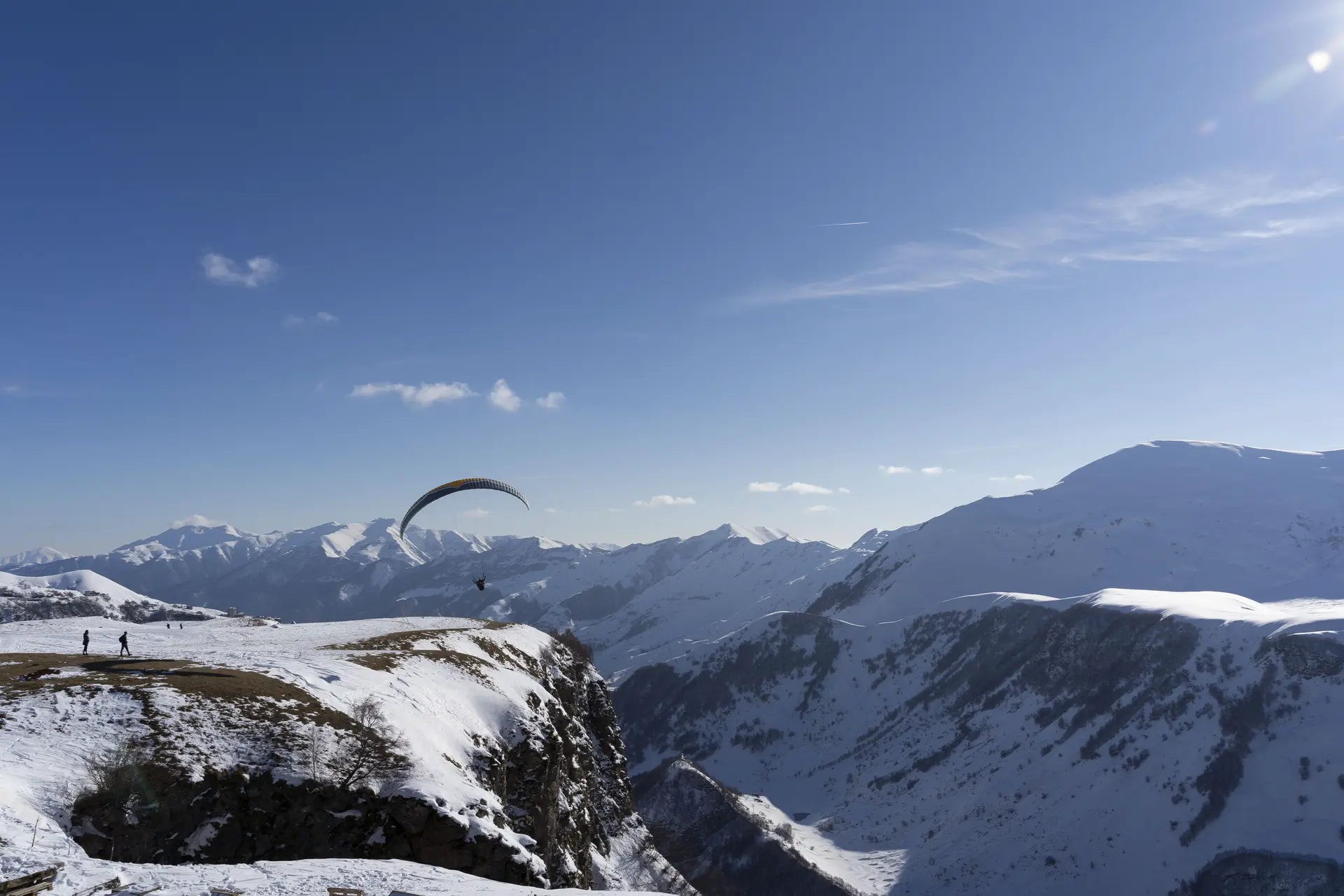
📌 View from Friendship Monument – Gudauri, Georgia
The itinerary in brief
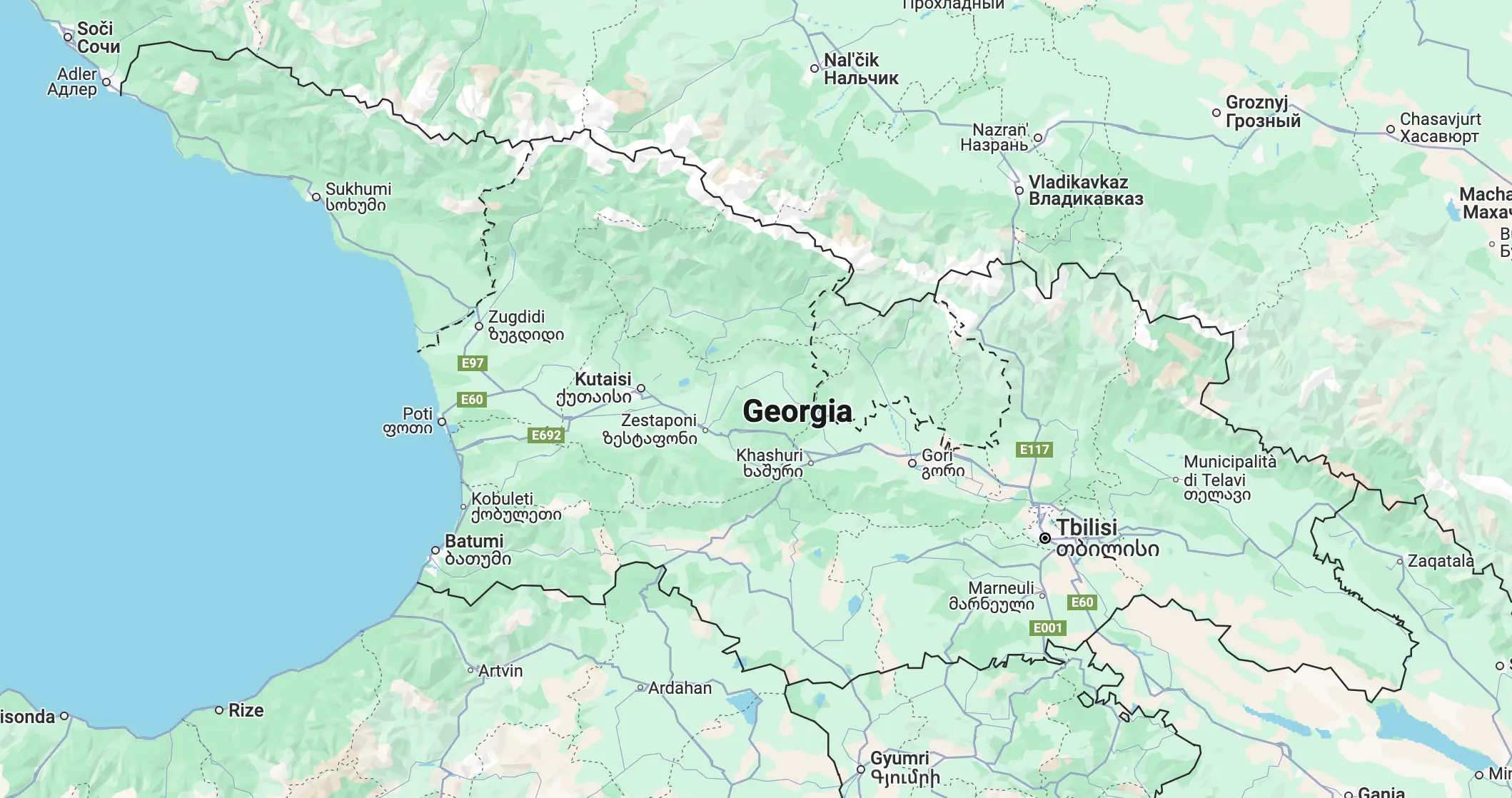
📌 Map of Georgia
If you have 10 days, a backpack and a desire to explore, Georgia is the perfect country: spectacular nature, cities full of history, friendly people and a cost of living that is good for the wallet. To give you an idea, my whole trip (accommodations, food, transportation, tours…) cost about 300-350€, and with a little care you can spend even less!
No need for overly rigid schedules here: be inspired by fascinating cities, epic mountains, and that hint of disorganization that makes everything more adventurous!
Here is a small summary of I spent my days:
- Day 1: Arrive in Kutaisi, first walk downtown and visit Bagrati Cathedral(spoiler: beautiful view!), a trip to the green bazaar and dinner at a local little restaurant.
- Day 2: Guided tour to Okatse Canyon, Prometheus Caves and Martvili Canyon. Nature galore and great photos! Quiet evening in town and some chilling in the hostel.
- Day 3: Free morning taking a tour of Kutaisi, then a train(slow, but a lot of fun!) to Tbilisi. Check-in at the hostel, night walk and dinner in the capital.
- Day 4: Epic hike to the Kazbegi Mountains(almost on the Russian border), passing through Zhinvali, Ananuri and Gudauri. Be prepared to be breathless(and also to return late because of crazy traffic).
- Day 5: Relax and discover Tbilisi: cathedrals, Old Town alleys, and evening out among Tbilisi’s clubs.
- Day 6: Tbilisi again: botanical garden, urban exploration, and a break to digest all the good things seen so far.
- Day 7: Early morning train to Batumi. Walk along the waterfront, lunch on the fly and tour of the city(spoiler: didn’t convince me too much, but worth a visit).
- Day 8: Some more Batumi in the morning, then bus back to Kutaisi. Dinner and relaxing evening.
- Day 9: Last few hours in Kutaisi, maybe another walk to the market, then head for the airport and flight home.
Having embarked on this trip in winter, some of the more difficult-to-reach regions, such as Mestia and Ushguli, remained off my schedule. If you visit Georgia in another season, you can easily add them to make the trip even more epic! Also, the itinerary is super flexible: if you fly into Tbilisi, you can reverse the order of stops and move nimbly by bus or marshutka to reach even the most distant towns. I chose to take as many trains as possible, both to save money and to avoid some of the roads in winter(including snow, cows along the way, and creative driving by Georgians–a unique experience!). But whatever means you choose, remember: in Georgia, adventure really is around every corner!
Day by day: the tale of the journey
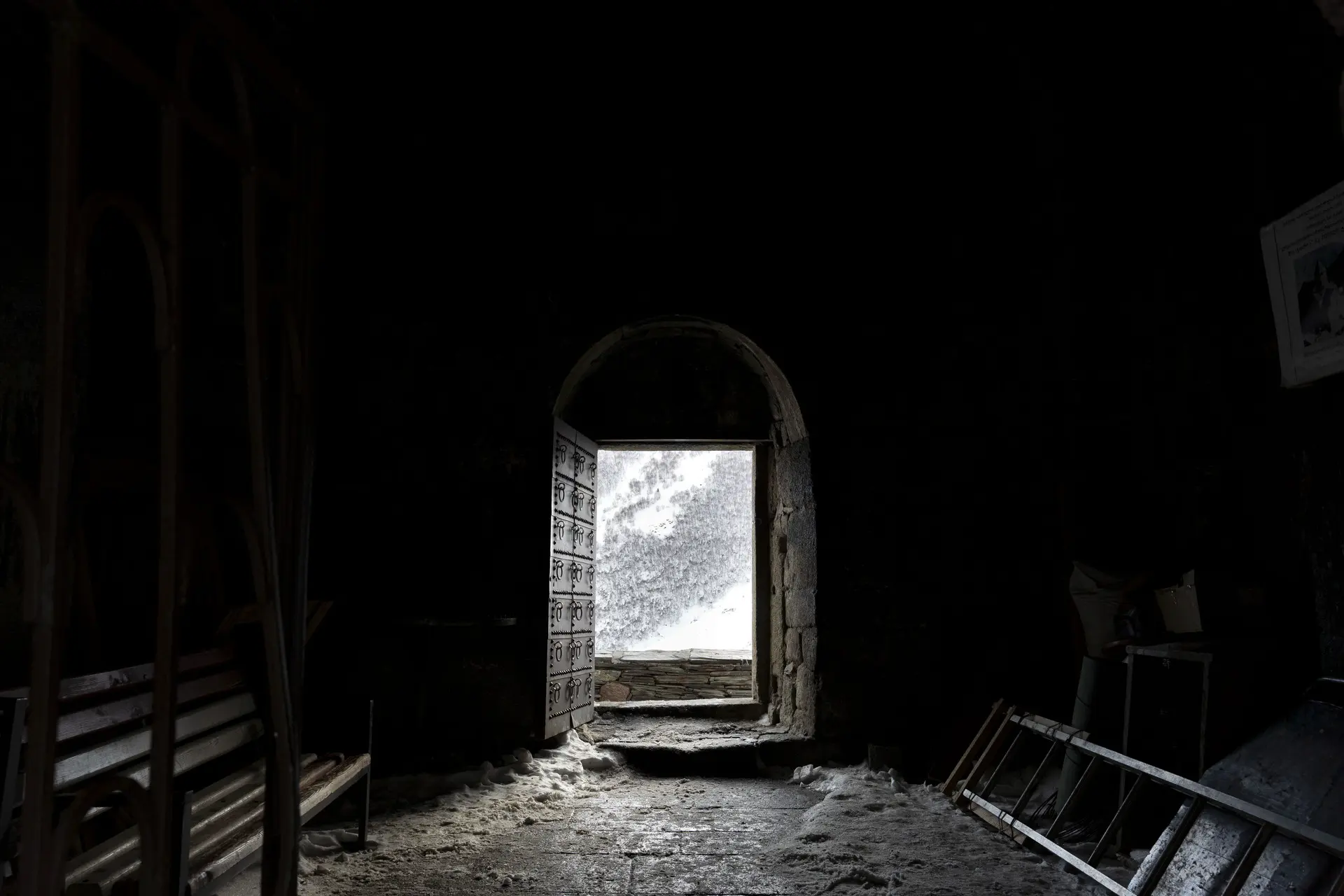
📌 Trinity Church of Gergeti – view of the mountains around Stepatsminda
Day 1 – Arrival in Kutaisi:
My trip to Georgia started with an approximately 4-hour direct flight from Rome to Kutaisi, landing there at about 2:40 pm. Once there, to get to the city one can opt for a public bus, which is a very convenient and inexpensive option (it leaves every two hours from the airport and costs 5 GELs – all schedules and information can be found here), or, to speed things up, book a Bolt, a cab service that is super cheap in Georgia (from the airport to the city takes just over 30 minutes and the cost is about 25 GELs ≈ €8).
Once I arrived in the city, I headed to my lodging, the Black Tomato Hostel (find out more). This hostel turned out to be a perfect choice: cozy, cheap (about 6€ per night) and with a very nice staff. I also got to know some volunteers working there, with whom I later shared other moments of the trip.
After checking in, I decided to explore Kutaisi right away, starting with Bagrati Cathedral. This majestic church, located on a hill, is a symbol of the city and offers spectacular panoramic views of Kutaisi and its surroundings. Built in the 11th century, the cathedral has been one of the UNESCO sites in Georgia for years and is a perfect place to immerse yourself in the country’s history and architecture.

📌 Bagrati Cathedral – Kutaisi, Georgia
From there, I moved on to the Green Bazaar, the beating heart of local life. This lively and colorful market is a sight for the senses: stalls filled with spices, dried fruits, the freshest vegetables, and typical Georgian cuisine. Strolling through the stalls of the bazaar is an authentic experience that allows you to discover the everyday life of Kutaisi and savor local products.
Having concluded my visit to the market, I continued walking the streets of Kutaisi, enjoying the quiet atmosphere of the city. For dinner, I stopped at Gala Restaurant, a typical restaurant where I enjoyed some of the Georgian delicacies, such as khinkali (dumplings filled with meat or cheese) and khachapuri (the famous cheese bread).
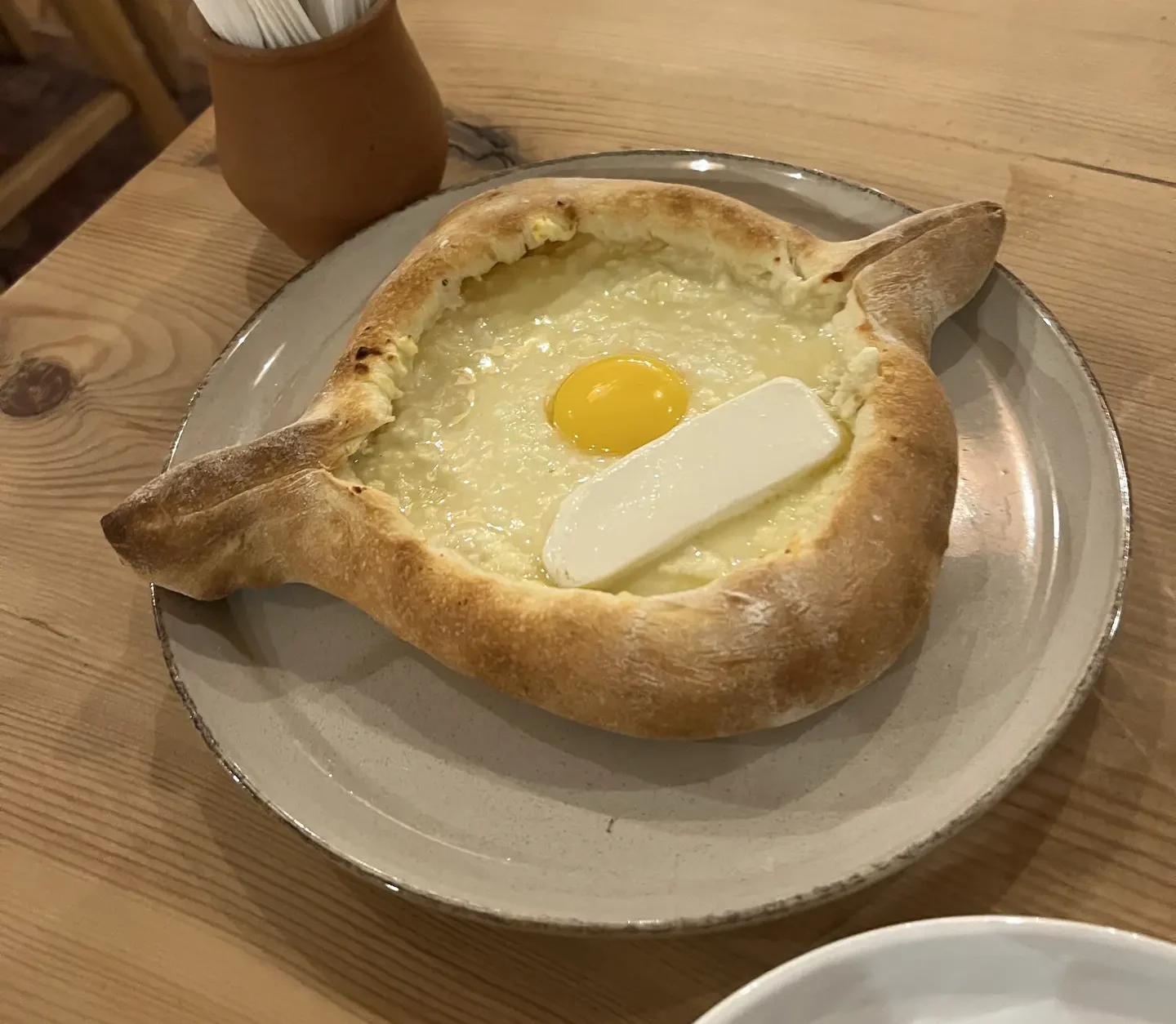
📸 Khachapuri – Gala Restaurant, Kutaisi
The day ended with a night walk along the River Rioni, crossing some of the main bridges connecting the two parts of the city. The tranquility of the river and the soft lights created a perfect atmosphere to relax after the first day of travel.
Day 2-Prometheus Caves, Okatse Canyon and Martvili:
The second day was a full immersion in nature, thanks to a guided tour organized by the guys from Budget Georgia. Our guide’s name was Saba and he accompanied us throughout the day with lots of interesting stories and jokes.
The meeting was downtown in front of the tour operator’s office (if you are interested, I’ll leave you here the link to book). After meeting up with the group, we left for the first stop of the day: the Prometheus Cave. This underground wonder stretches for 1.4 km and, with a constant temperature of 14°C, is perfect in any season. The colorful lights and songs that start in some sections make the experience almost magical.
After exploring the cave, we headed toOkatse Canyon, where the view is truly breathtaking. The walk along the suspension footbridge, which skirts part of the Canyon, is about 2 kilometers, and to get there you can choose to either hike for about 20 minutes or have your guide drive you there directly.
In the middle of the day, before continuing on to the next stop, we stopped for lunch at a local restaurant. The dishes were simple but delicious-a mix of authentic Georgian cuisine that charges you up for the rest of the tour.
Our last stop was Martvili Canyon, a place that looks like something out of a movie. Here we ventured out on a sort of boat-canoe-rafting (not sure how to describe it, but trust me, it’s so much fun!), navigating between high rock walls and picture-postcard waterfalls. It was the most relaxing activity of the day, perfect to end the tour on a high note.
We returned to Kutaisi around 6:00 pm. After such a busy day, I spent the evening in the hostel relaxing and chatting with other travelers, and then took a short evening walk downtown.
There are several tours to visit these areas, but with Budget Georgia I had a great time, also thanks to the friendliness of Saba, our guide. It is a super-recommended experience for those who love nature and want to discover unique places without stressing too much about travel.
Day 3 – Travel by train to Tbilisi:
The morning of the third day began with a leisurely ride around downtown Kutaisi, exploring without a specific destination to enjoy the relaxed atmosphere of the city. Around noon, with a Bolt, I reached the Rioni train station, located about 10 to 15 minutes’ drive from the center. This is the main station for those departing from Kutaisi and is small but functional.
For only 9 GEL (about 3€), I had pre-booked a seat on the train to Tbilisi, departing just before 1 pm and arriving at 5:35 pm. For reservations, I always used the website Tkt.ge, easy to use and perfect for arranging train travel in Georgia.
Getting on the train was an adventure in true Georgian style! The Rioni station was rather empty, and in order to figure out which carriage was the right one, I had to ask the babushkas present for help, using Yandex Translate (which I recommend, because Google Translate did not work well for Georgian). After a few funny exchanges, I managed to find my seat.
Although the train was quite old, it was very punctual and passed through mountains, hills and villages, providing breathtaking scenery along the way. It was a real surprise: a four-hour ride in total relaxation, with the beauty of the scenery making every kilometer unforgettable.
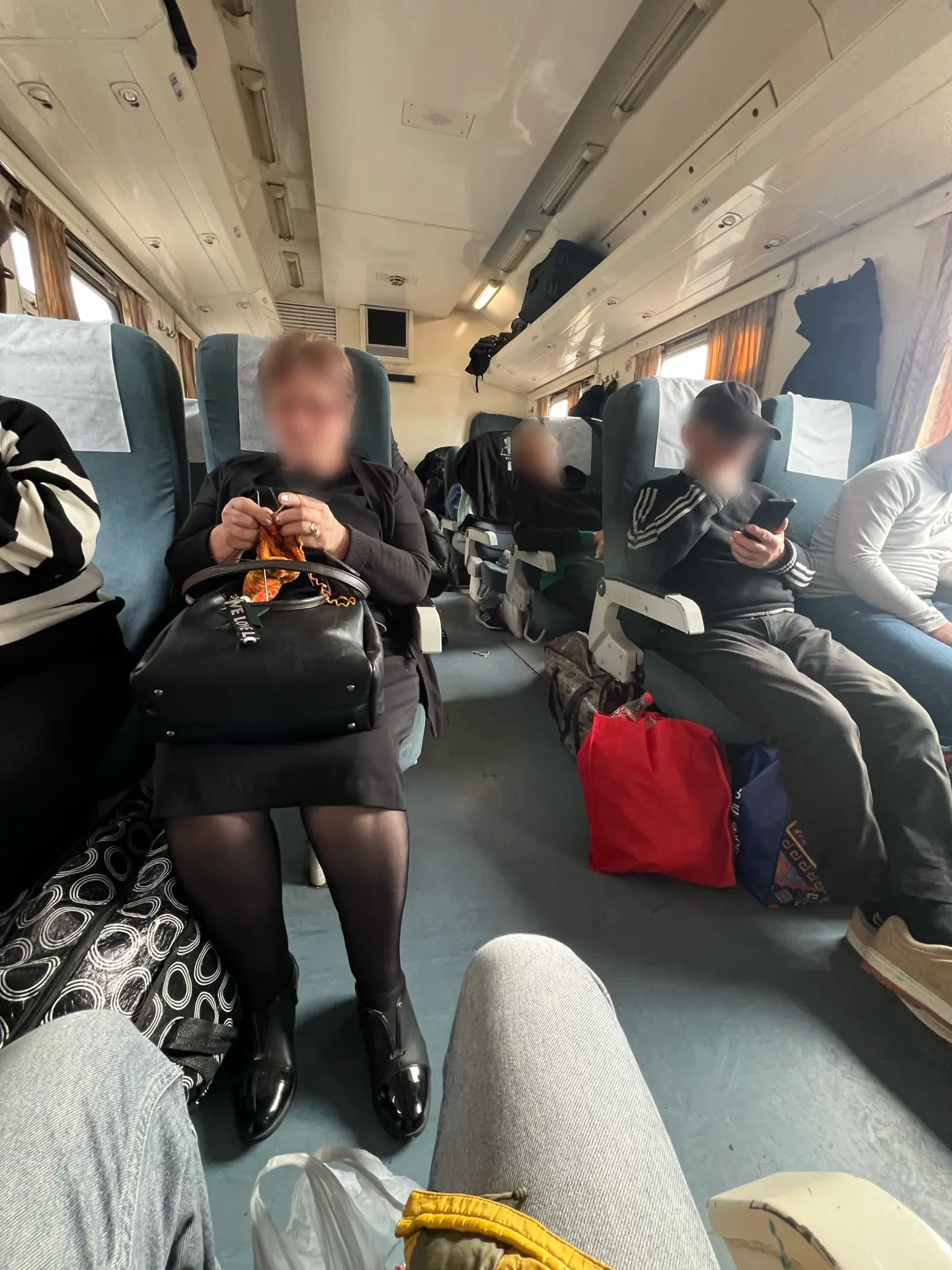
📸 Babushka crocheting embroidery – Train from Kutaisi to Tbilisi
Once I arrived in Tbilisi at about 5:35 p.m., I decided to go to theAtrium Boutique Hotel with a walk of about 40 minutes. It was a great way to start getting acquainted with the city and see some interesting sights. This was the only hotel on my trip, chosen because I needed a flexible check-in and an early morning breakfast for the next day. The room was very nice, and for 29€ I got a really cozy private double.
After settling in, I met some guys I had met in the previous days and we went to dinner at the restaurant Chveni, where I tasted really delicious local dishes, including excellent vegetables prepared according to traditional Georgian recipes.
The evening ended with a stroll down Davit Aghmashenebeli Avenue and, one of the liveliest streets in Tbilisi, famous for its clubs, restaurants, and cheerful atmosphere. The evening lights and energy of the city immediately made me fall in love with the capital.
Day 4 – Excursion to Kazbegi (Zhinvali, Ananuri, Gudauri):
The fourth day was undoubtedly the most epic of the trip, a perfect mix of breathtaking scenery, adventure and a few laughs. The day started early: a quick breakfast at the hotel and then a half-hour walk to Avlabari metro station, where the office of Gamarjoba Tours. Here, since I would later sleep in another hostel at night, I left a bag with clothes I did not need during the tour, only to pick them up on the way back (spoiler: this will be important later).
At 8:30 a.m., after meeting our guide and the other participants, we set off on a tour that would take me among the most beautiful places in Georgia along the Georgian Military Road, a legendary route that connects Tbilisi to Russia by crossing the majestic Caucasus Mountains.
The Georgian Military Road is not only a spectacular scenic route-it is also the only route connecting Georgia to Russia by land. In normal times, it is busy, but with European sanctions and the need to move goods overland, the situation was particularly chaotic.
Along the snow-covered hairpin bends were endless lines of trucks heading to Russia, many of them stopped for days waiting to move forward. This created surreal traffic: a constant passing of trucks against the grain on tight curves and snow-covered roads. Overtaking on sheer hairpin bends was an experience that alternated moments of laughter with those in which I gritted my teeth.
The first stop was the Zhinvali Reservoir, a reservoir created in the 1980s by a dam built in Soviet times. The reservoir is famous for its turquoise waters, which seem to come straight out of a postcard. Surrounded by hills and mountains, this lake is one of Georgia’s main water supplies and is spectacular in every season.
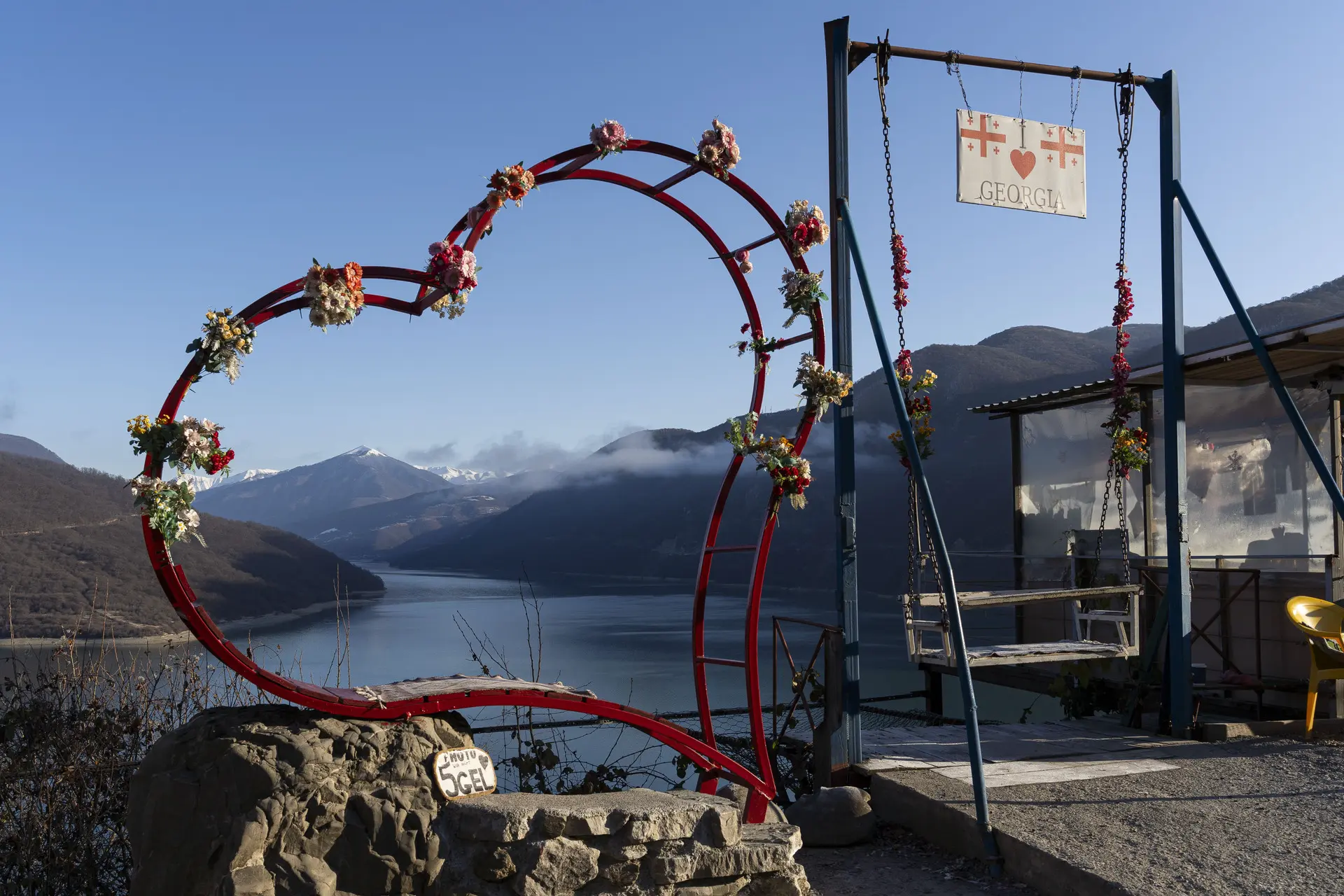
📌 View of the Zhinvali Basin – Georgia
Shortly afterwards we arrived at Ananuri Fortress, a medieval complex overlooking Lake Zhinvali. This structure was the headquarters of a powerful feudal dynasty and dates back to the 13th century. The defensive towers and church adorned with carvings are perfect for taking incredible photos as well as immersing yourself in the history of this region.
Late in the morning, we therefore stopped at Pasanauri, a small village where we ate for lunch (the place was quite touristy, but not bad).
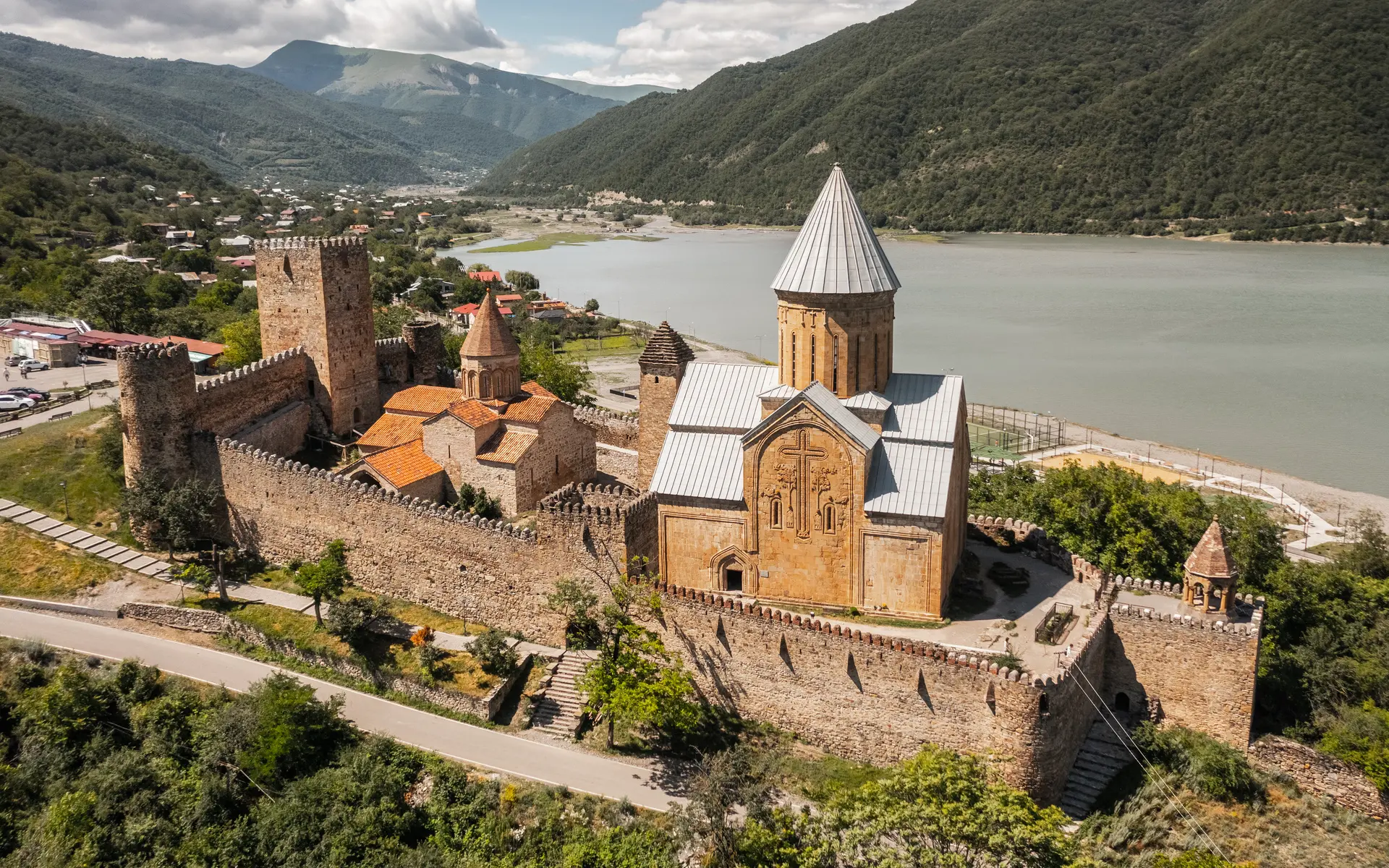
📌 Ananuri Fortress – Georgia
The next stop was in Gudauri, shortly after which we visited the Monument of Friendship between the Georgian and Russian peoples, built in 1983 to mark the bicentennial of the treaty between Georgia and the Russian Empire(if you are interested in history, you can find out more here).
This large monument, adorned with vivid mosaics depicting historical and cultural scenes, overlooks a beautiful valley framed by the Caucasus Mountains. The view from here is indescribable: a panorama that leaves you breathless, with snow-capped mountains silhouetted against the blue sky.
There was also the possibility of paragliding, but unfortunately there was no time to stop and fly. Definitely something to add to the list for a future visit!
The most exciting stop was undoubtedly the visit to Kazbegi (Stepantsminda) and the Trinity Church of Gergeti, located 2,170 meters above sea level. To reach the church, we took 4×4 off-road vehicles driven in a style that I would describe as… lively! Going up the snowy hairpin bends was a unique adventure.
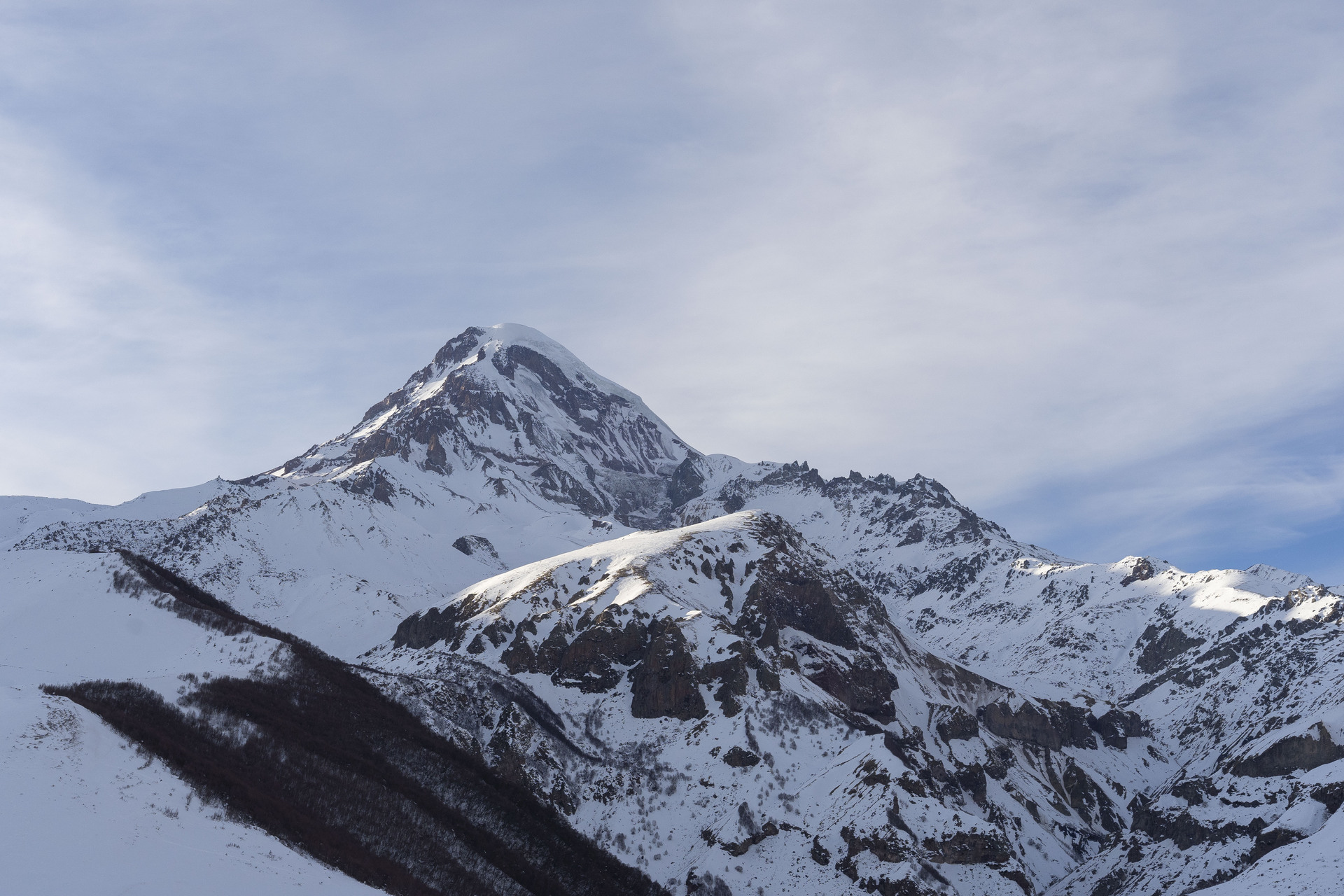
📌 Mount Kazbek (5047 m) – Georgia
The church is in a spectacular location at the foot of Mount Kazbegi, one of the highest peaks in Georgia. With the clear sky, the view of the valley and surrounding mountains is something that leaves one speechless. It is a place that combines spirituality, nature and pure beauty.
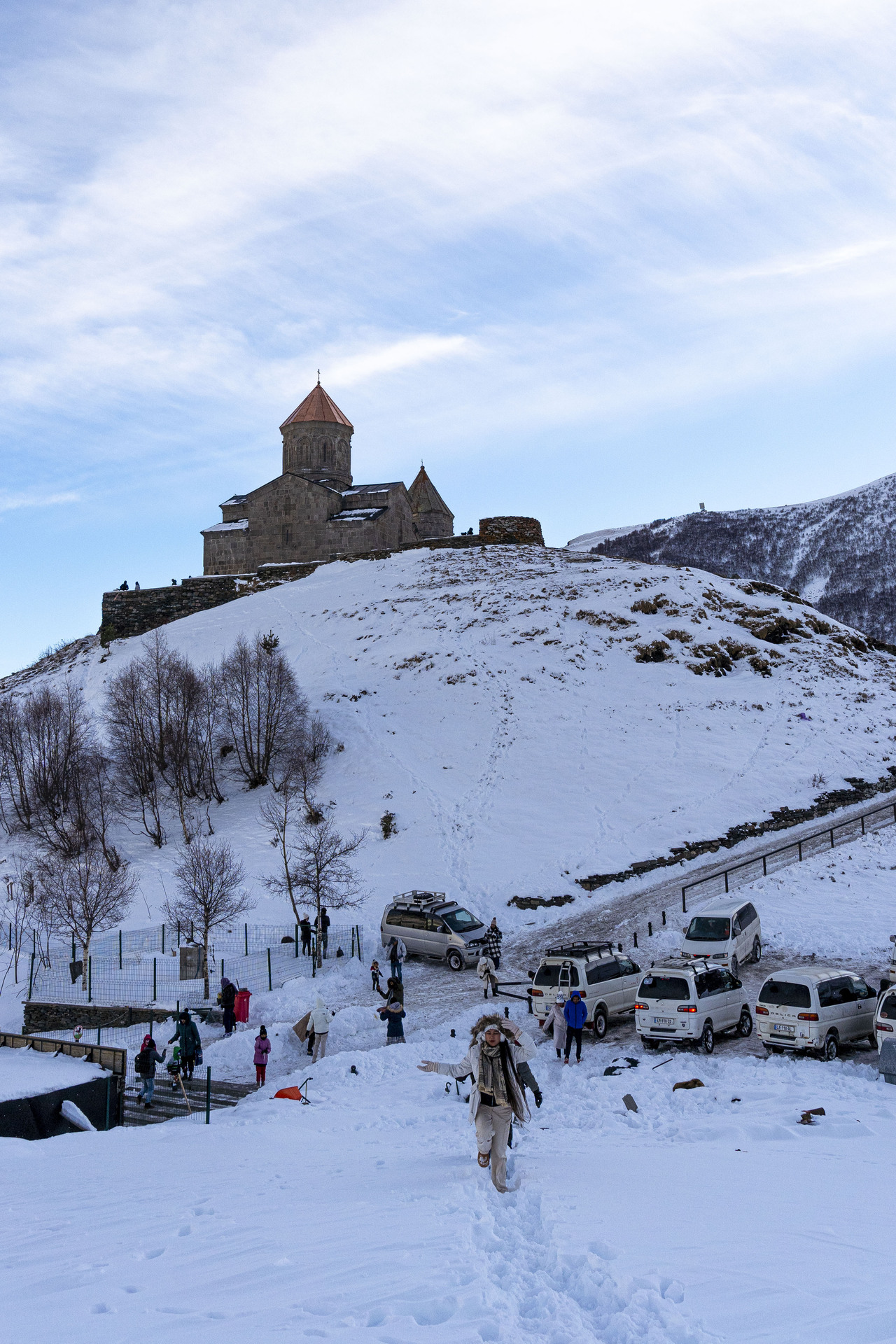
📌 Trinity Church of Gergeti (2170 m) – Georgia
The return trip was equally adventurous: due to truck traffic, we were stuck for three hours at one point on the road. In the end, we arrived in Tbilisi around 11 p.m., tired, but happy!
Trying to retrieve my bag at the office of Gamarjoba, I discovered that it was closed! Fortunately, I had my cell phone charger with me. I took a Bolt and went to the Fabrika Hostel, an amazing place carved out of an old Soviet factory, now converted into a modern and lively hostel. Between the art-filled common spaces and nearby eateries, it’s perfect for socializing and relaxing.
After a quick check-in and dinner on the fly around midnight, I collapsed on the bed. Without my bag, I slept in the day’s clothes, but I was so happy (and even a little cold) that it didn’t matter.
Day 5 – Discovering Tbilisi:
The fifth day in Tbilisi began at a more leisurely pace. The first mission of the day was to retrieve my bag at the tour operator’s office from the previous day. After a short morning walk, I finally got my things back and returned to the hostel, where I changed and dropped off my luggage.
The Fabrika Hostel, an old Soviet factory converted into a cultural and social hub, is one of the most interesting places I have stayed. It has large common spaces full of life, colorful murals and an inner courtyard with cafes, restaurants and small stores. It is perfect for relaxing, working or socializing. If you happen to be in Tbilisi, I can only recommend it (you can book directly here)!
I took my morning slowly, spending a couple of hours in their common areas, before having lunch at one of the venues located just inside Fabrika’s courtyard.
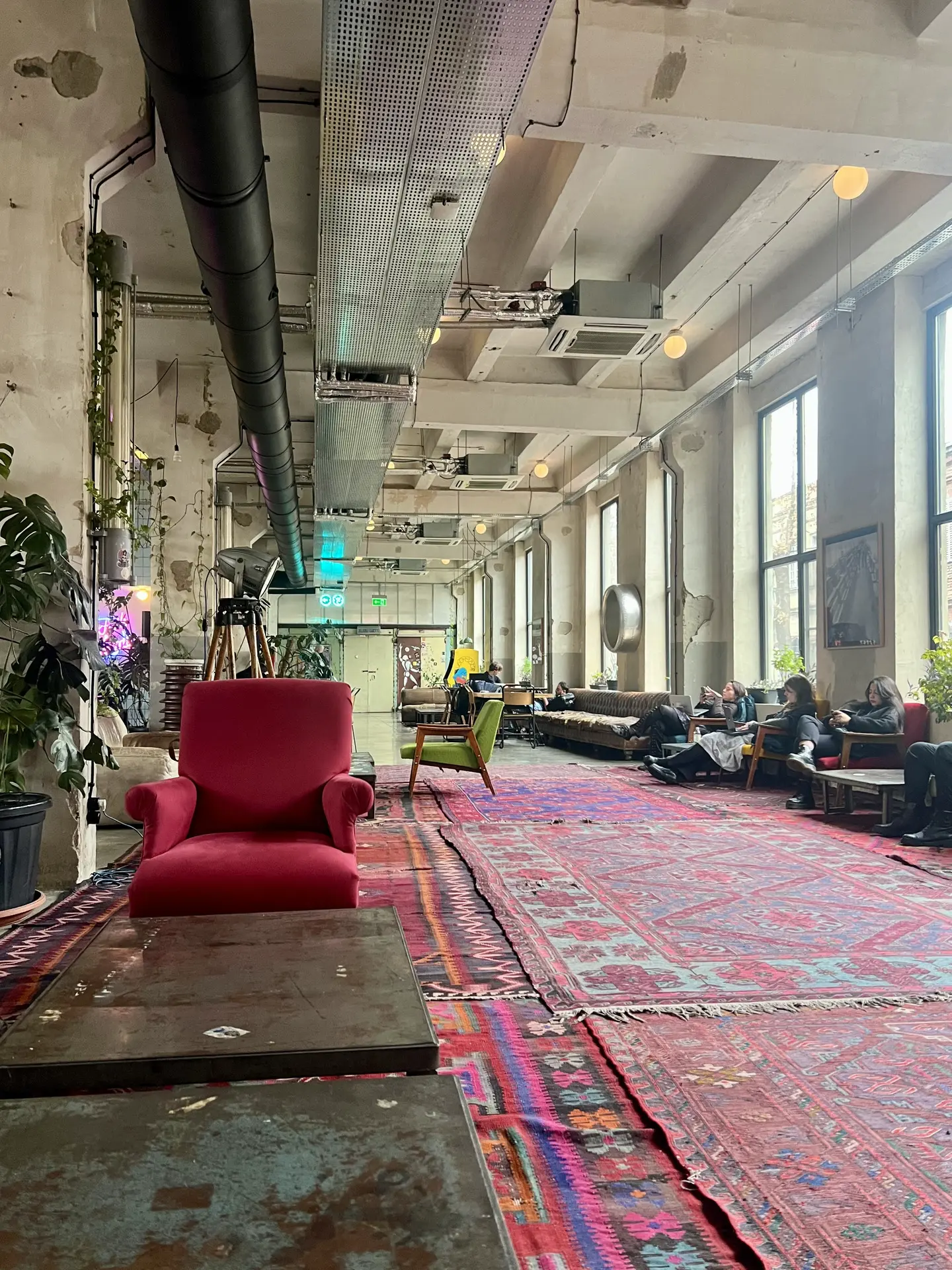
📌 Fabrika Hostel Hall – Tbilisi, Georgia
After lunch, I started walking without a specific destination, letting my instincts guide me a bit.
The first stop was Tbilisi’s majestic Holy Trinity Cathedral, also known as Sameba. This imposing church is one of the modern symbols of the city: built in the early 2000s, it dominates the skyline with its majestic structure and large golden dome. It is the country’s main Orthodox cathedral, and as you stroll through its spacious gardens and observe the architectural details, you will feel a strong sense of spirituality.
Continuing on, I crossed the famous Peace Bridge, a modern structure that connects the two banks of the Mtkvari River. This glass and steel bridge is one of the most striking examples of the contrast between ancient and modern that characterizes Tbilisi.
From there I entered the heart of Tbilisi’s Old Town and Old Tbilisi, where the past comes alive among cobblestone alleys, houses with wooden balconies, and old Orthodox churches. Walking here is like taking a journey through time, with each corner telling a different story.
Crossing the neighborhood, I made my way to Shota Rustaveli Avenue, one of the city’s main arteries. Rustaveli is a mix of historic buildings, theaters, stores, and modern cafes, but on the days I was there it was closed to traffic and full of protesters because of the political situation in Georgia at the time.
For dinner, I stopped at the Café Daphna, a cozy little restaurant where I had some excellent khinkali, the famous Georgian dumplings. Until now I had always eaten them with a fork, but the very nice waiter explained to me that they are eaten strictly with the hands: you grab the top, bite the edge to sip the hot broth inside, and then finish the whole thing. A small detail that made the dinner even more authentic!
After dinner I returned to the hostel, where I happened to meet a volunteer I had met in Kutaisi and some of his friends. Amid chatter and laughter, we had a beer in one of the bars below the Fabrika before joining a group of South Americans to explore some bars in the city center.
Unfortunately, many venues were closed due to the events related to the political elections that were taking place in those days, but this did not stop us from having a good time. We toured a couple of bars and the evening ended with good conversation and new friends.
Day 6 – Tbilisi between nature and the city:
The sixth day of my trip was all about getting some rest. After a morning in the hostel, I went out to visit one of the most fascinating places in Tbilisi: the National Botanical Garden of Georgia.
The Tbilisi Botanical Garden is a truly magical place, an oasis of peace surrounded by greenery within walking distance of the city’s historic center. With admission costing just 4 GEL, it is a must-see destination for those who want to immerse themselves in nature without straying too far from the city.
The garden covers more than 128 hectares and is traversed by a stream, with paths winding through hills, bridges and waterfalls. Walking through its paths, one can see a wide variety of plants and trees from all over the world. Some areas are dedicated to local species, while others display exotic vegetation, creating a truly unique mix of colors and scents.
There is also a beautiful waterfall, a corner that looks like something out of a postcard. The tranquility of the place is perfect for disconnecting from the hustle and bustle of the city and recharging your energy.
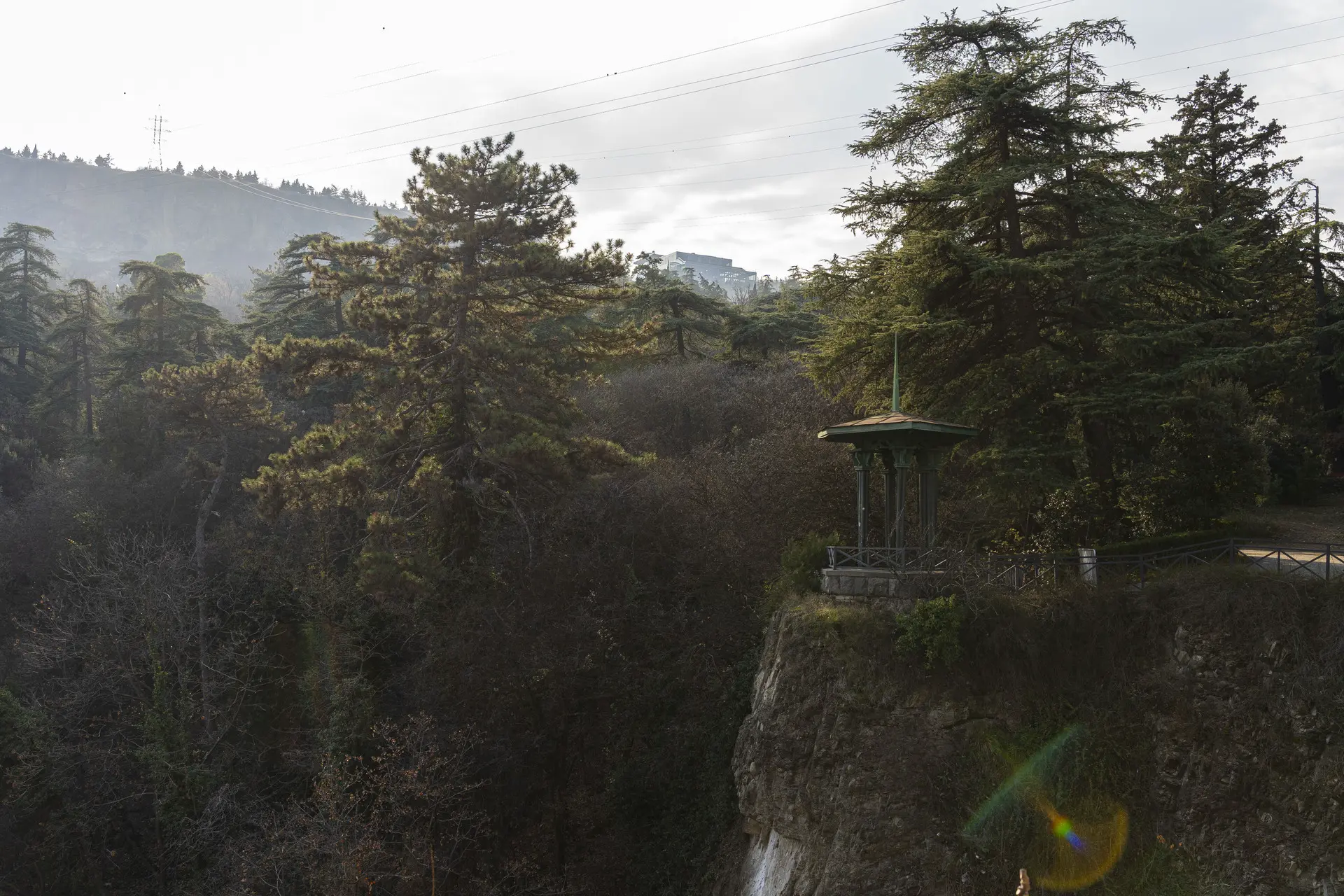
📌 Tbilisi Botanical Garden
After spending all morning exploring the botanical garden, I headed to Shota Rustaveli Avenue, where I treated myself to a very simple but lunch that I will remember with a smile. I bought a kind of Georgian baguette, warm and fragrant, and paid just 1 GEL for it! It is amazing how in Georgia you can enjoy good things while spending so little.
I spent the rest of the day walking around downtown Tbilisi and its neighborhoods. I wandered aimlessly, getting lost in alleys and streets I already knew and discovering new ones.
Every corner of the city tells a different story: from traditional houses with wooden balconies, to modern murals popping up here and there, to hidden cafes where life seems to flow more slowly.
I had nothing special planned, and it was this freedom that made the day special. I had time to observe the locals, soak in the atmosphere of the city, and appreciate the details that are often missed when one is in a hurry.
Day 7 – Train to Batumi and explore the city:
The last day starts early with checkout from the hostel and the journey to my new destination: Batumi, a modern, but highly contrasting city on the Black Sea.
At 8 a.m., from the central station in Tbilisi, I took a train bound for Batumi. This station is definitely larger and “easier” than the Rioni station in Kutaisi: a digital board, written in both Georgian and English, makes everything easier for travelers.
The train itself was very modern and comfortable. During the journey of about 5 1/2 hours, I passed through beautiful landscapes that changed as we approached the coast.
Arriving at the Batumi station, there were two options to get to the center:
- Get a Bolt, cheap and fast;
- walk about 4 km along the waterfront, a pleasant route despite some construction work in progress.
I chose to walk, and it was a nice way to approach the city. The walk along the coast was about an hour or so and took me directly to downtown around 2 p.m.
After a quick snack bought from a local bakery, I ate by the sea, enjoying the sound of the waves and the salty air.
Subsequently, I left my backpack in the hostel. I stayed at the Back2Me, a nice and rather clean hostel, although among those visited during the trip it is perhaps the one that impressed me the least. Still, it was a good base for exploring Batumi.
I then spent the afternoon exploring somewhat randomly, as is my wont, letting my curiosity guide me. I walked through its main streets, alternating between stops at fascinating squares and glimpses of the sea.
Among other things, I visited, for example, Europe Square, at the center of which stands the statue of Medea (a reminder of Greek mythology and the legend of the Argonauts).
Another stop was Theater Square, where the Batumi Theater is located. The building has a classical charm, with columns and architectural details reminiscent of the great European theaters. All around, small, well-kept gardens make the area pleasant for a break or a stroll.
Of course, I could not miss the Batumi waterfront, one of the city’s main attractions. It is a very long and perfectly equipped boulevard: on one side the sea, on the other side spaces dedicated to walkers or cyclists.
As I walked around, I noticed the contrast between Batumi’s traditional side and its modern skyscrapers. The city has a lively, almost seaside metropolis feel, but at times it gives the impression of being a bit artificial, perhaps because the contemporary style of some of the buildings does not fully match the authentic charm of Georgia’s other cities.
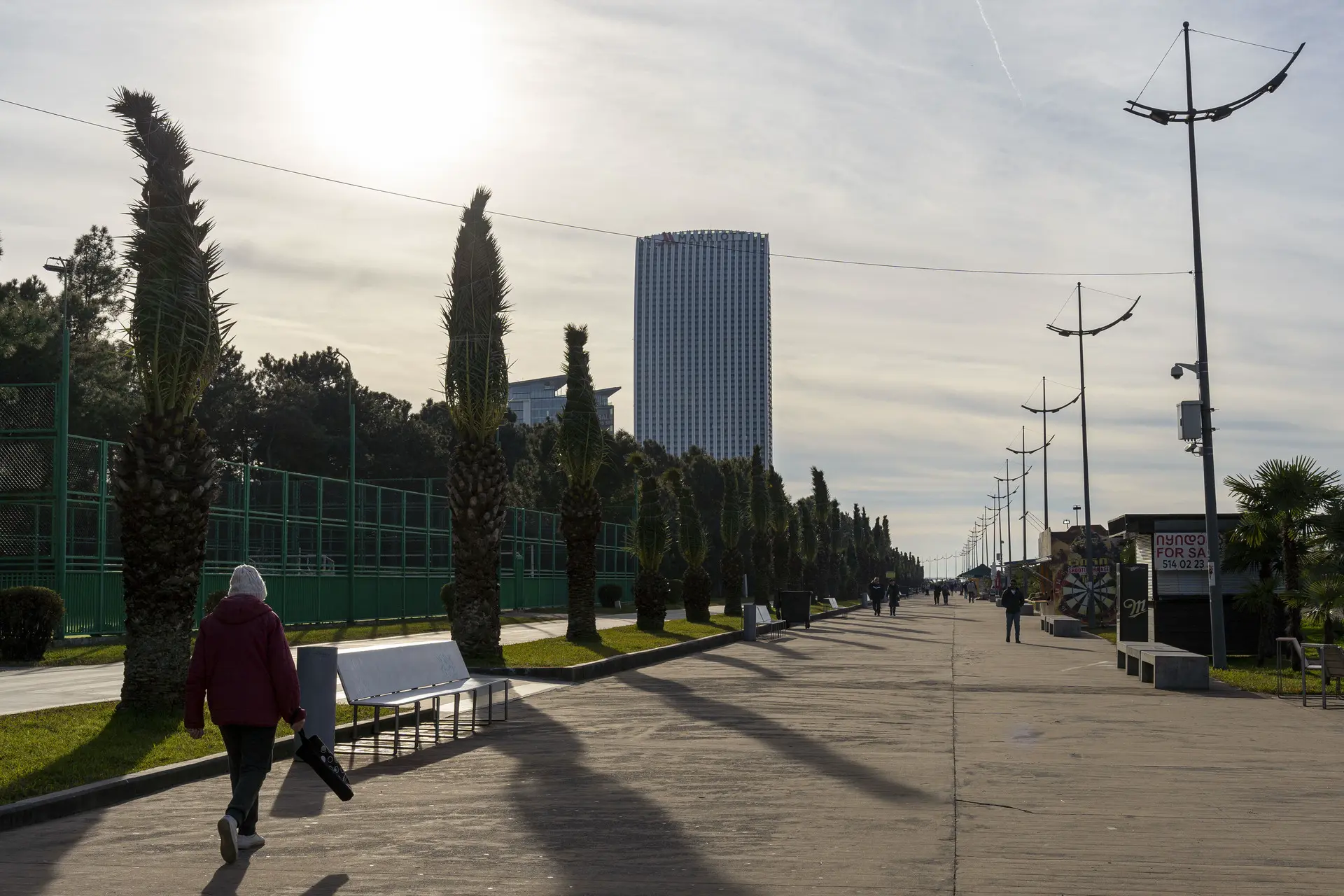
📌 Batumi waterfront
Day 8 – Return to Kutaisi:
The morning in Batumi began with a walk along the waterfront, where I was once again able to admire the city’s distinctiveness. I lingered under some of its most iconic skyscrapers, which house luxury hotels and casinos, observing the contrast between the modern architecture and the surrounding landscape. One of the most interesting stops was the Ali and Nino statue, a moving sculpture representing love and separation, inspired by the famous Georgian legend.
By mid-morning, it was time to leave Batumi, so I took a bus from the company GeorgianBus, which I had booked the day before. The trip to Kutaisi took about two hours and the cost was 25 GEL. The bus was comfortable and well organized, a perfect option for moving between the two cities.
Arriving at Kutaisi airport, I waited for the shuttle to reach the city center. Once there, I resumed exploring the city, walking along the Rioni River and appreciating the peaceful atmosphere of the place. Returning to Kutaisi gave me a pleasant feeling of familiarity, and I returned to the Black Tomato Hostel, where I had already stayed and had had a great time.
For dinner, I wanted to treat myself to something special and went to Lilestan, an elegant and cozy restaurant, perfect for those looking for an upscale dining experience. The cuisine was really great, a mix of local flavors and thoughtful presentations. It was the perfect way to end the day.
After dinner, I took another walk along the river and through the streets of Kutaisi, enjoying the tranquility of the city.
Day 9 – Last look at Kutaisi:
The last morning in Georgia began with a breakfast at Stretto, the café I had discovered during my stay in Kutaisi. Here I enjoyed a great espresso and a delicious chocolate croissant, perfect for saying goodbye to the city with sweetness.
After breakfast, I treated myself to one last walk through the streets of Kutaisi, this time dedicated to looking for some souvenirs.
Around noon, I took a Bolt to the airport in Kutaisi. I could have waited for the shuttle, but the schedule did not match well with my departure, and I did not want to risk having to move too early.
At the airport at the end, I had some time to reflect on the experience I had just had: Georgia gave me breathtaking scenery, fascinating culture, and unforgettable encounters; every city and place I visited had its own magic, and the people I met along the way made it all the more special.
With a heart full of memories and a slightly heavier backpack, I boarded the plane, leaving behind a land that exceeded all expectations. It was a beautiful trip, an adventure that I would recommend to anyone who wants to discover a unique and amazing place.
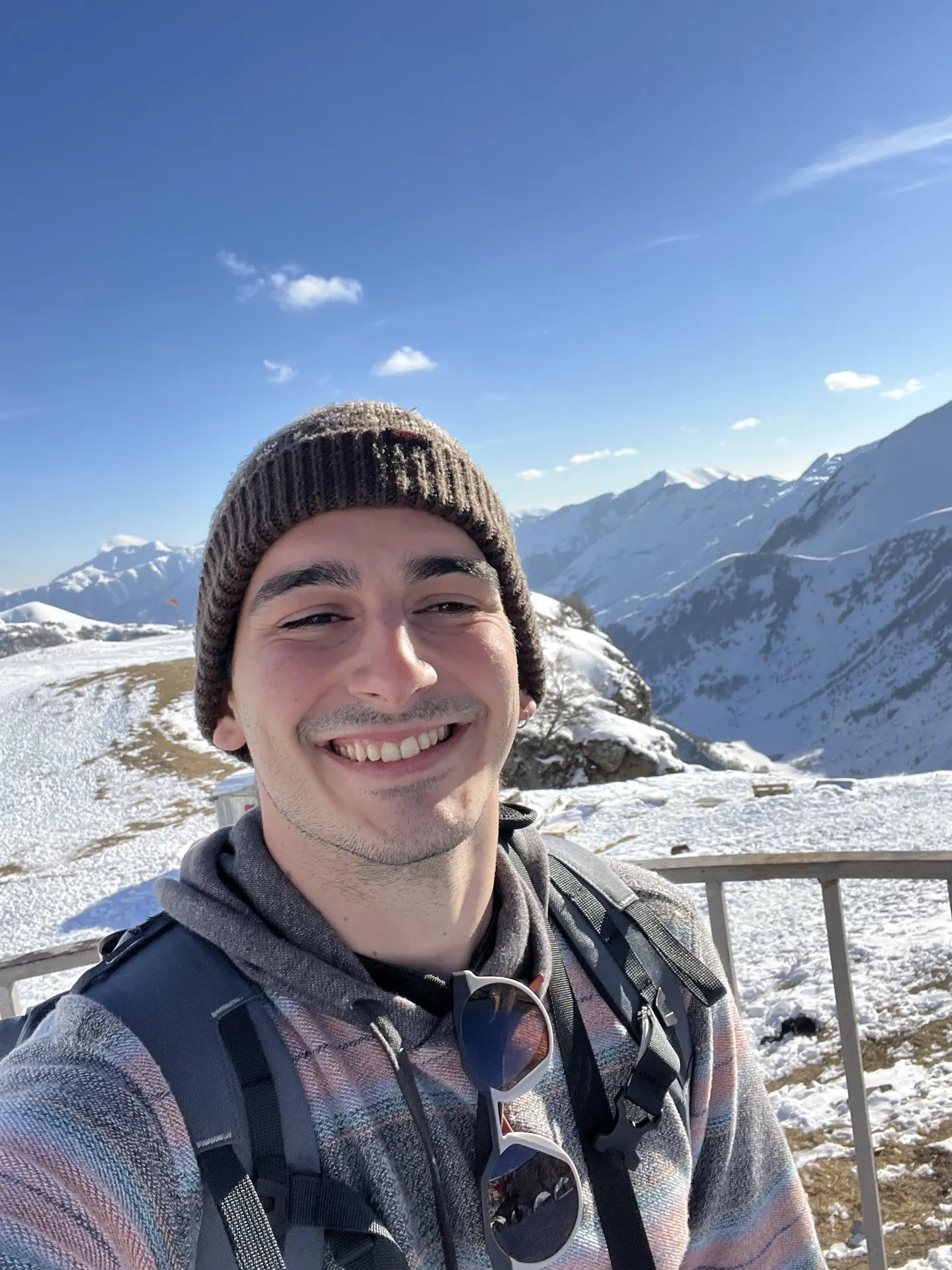
📸 Greetings from Georgia! – Andrew
Thank you so much for reading this far! I hope you found some useful information or got even a little bit curious about this adventure!
If you want to find out more useful information for planning and organizing such a trip, read on and I will try to give you some tips that have been very helpful to me!
Transportation in Georgia
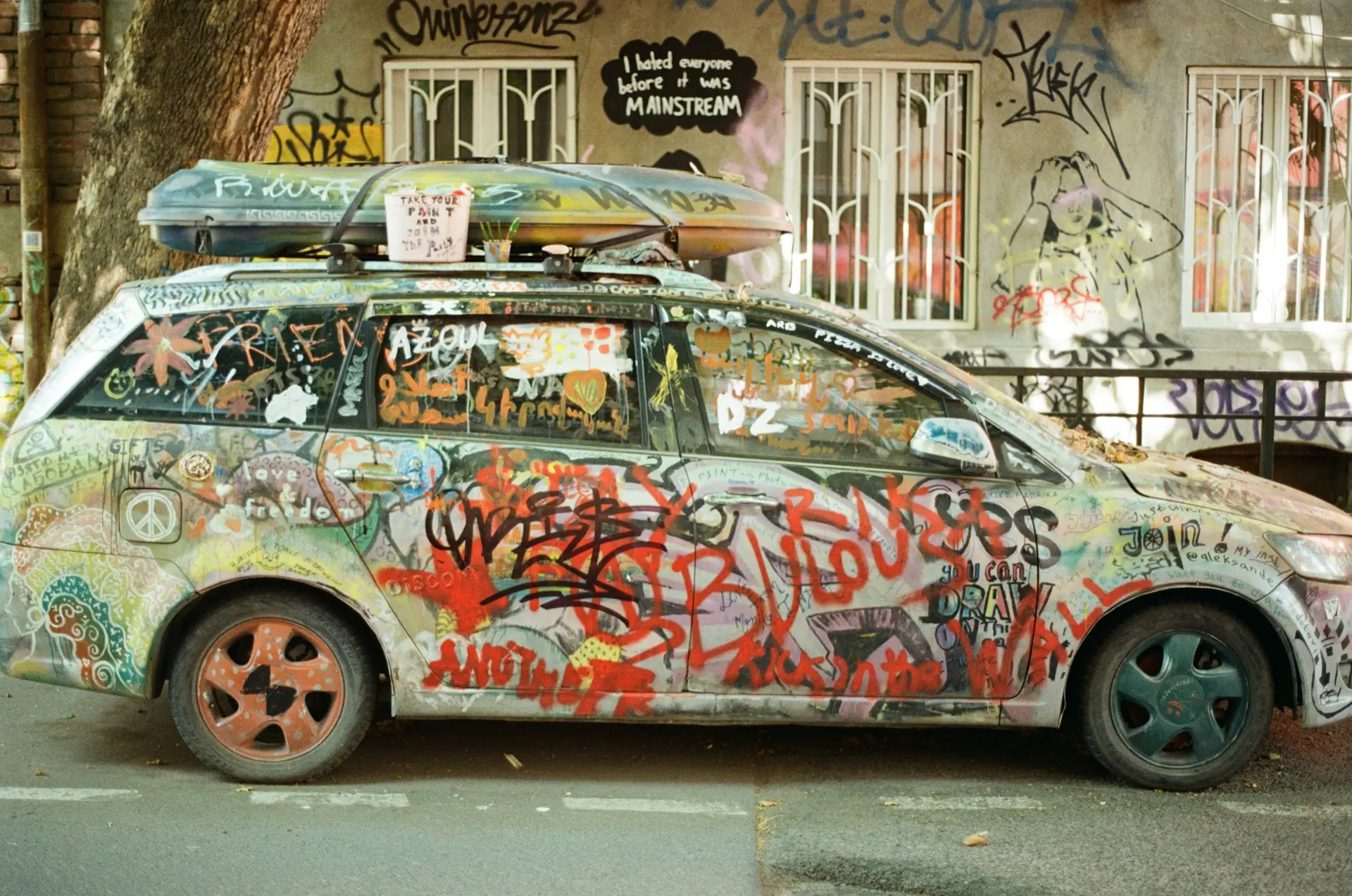
📌 Tbilisi – photo by Georgy Nikanovich on Unsplash
Getting around Georgia is easy and also tends to be very inexpensive. Within cities, getting around on foot is definitely the best option, not only to save money but also to better appreciate the streets, neighborhoods, and unique atmosphere of each place. However, for longer distances or when you are short on time, Bolt is an excellent solution: costs are very low, vehicles are very easily found, and the wait is almost always minimal. If you opt for a private cab, it is essential to clearly agree on the price in advance, but my advice remains to use Bolt, which provides transparency and, usually, the cheapest rates.
As far as inter-city travel is concerned, the most popular means used by locals are marshrutkas, small buses that connect virtually every corner of the country. Although they can often be a bit uncomfortable, with drivers who sometimes tend to drive a bit recklessly, they are an economical and authentic choice. If you want to better understand how marshrutkas work and how best to use them, I recommend this great article: Georgia Marshrutka Transport Guide on Wander-Lush.
For those who prefer more comfort, there are the traditional buses, which connect major tourist destinations such as Kutaisi, Tbilisi and Batumi, offering a more stable solution suitable for those who do not like road adventures. To search for and book buses, two excellent options are. GeorgianBus e CityBus Georgia, which offer comfortable and punctual travel between major cities and tourist attractions.
Another interesting option is trains, which are perfect for those seeking a quiet and scenic experience. Although the lines are often slow and some trainsets a bit dated, traveling by train allows you to enjoy Georgia’s landscapes in a relaxed way and while spending very little. To book trains, I recommend the site tkt.ge o TRE.ge, which are reliable and intuitive platforms.
In short, regardless of the means chosen, moving around Georgia is always part of the journey: a mix of adventure, authenticity and discovery!
Hostels and guided tours
Hostels in Georgia have been a real surprise: modern, clean, cozy, and safe. With extremely affordable prices, they are perfect for meeting travelers from all over the world and also for smart working people, as many guests work directly from computers in common areas. I found and booked my hostels mainly on Booking.com e Hostelworld, but for this time Booking often had the best rates.
I leave below a list devi various hostels where I stayed during my trip:
- Kutaisi | Black Tomato Hostel
- Tbilisi | Fabrika Hostel
- Batumi | Back2Me
As for guided tours, I recommend instead to consult GetYourGuide, which offers a wide selection of tours with competitive prices, clear details and reliable reviews. Then, if a specific tour catches your eye, contacting the tour operator directly may lead you to discover any discounts or extra options.
The two tours I chose (especially the one to Kazbegi) were among the best experiences of the trip. For the low cost and quality of service, guided tours in Georgia are definitely worth the investment!
Useful Resources
Local SIM card:
Rather than an eSIM which, although convenient, costs a bit more in Georgia than traditional SIM cards, I chose the package “All Unlimited” from Magticom, the leading Georgian operator. For only 12 GEL (about 4€) for 7 days, you have unlimited data, calls and SMS. My advice, however, is to buy the SIM in the city and not at the airport, as rates tend to be cheaper that way. In the Magticom stores I went to, both in Kutaisi and Batumi, the staff speaks English without any problems.
Money and Payments:
In Georgia, almost everywhere in the cities you can pay by card, so there is no need to withdraw much cash. However, having some Lari (GEL), or local currency, in your pocket is always helpful. To avoid exchange rate fees, I used Revolut (find more information here): the card I always use when I travel and which I honestly think is super practical and convenient.
Websites and blogs:
If you are looking for a detailed and clear blog, The Wander-Lush is in my opinion unbeatable for Georgia. Its dedicated section (Georgia Travel Guides) is a mine of very useful information, which helped me tremendously in planning the trip.
Itineraries you might like
West Highland Way
Discover the West Highland Way, a 154-kilometer walk in Scotland through nature and unspoiled landscapes. Get inspired by WalkingEurope!
Laugavegur
Live a breathtaking experience by walking the Laugavegur, Iceland’s most famous path that will take you to discover the far north
The Way of St. James from Sarria
Discover the Way of St. James from Sarria, walking the last 120 km, necessary to receive the “Compostela”. Go through unique places and have fantastic experiences and sensations that will remain for a lifetime!

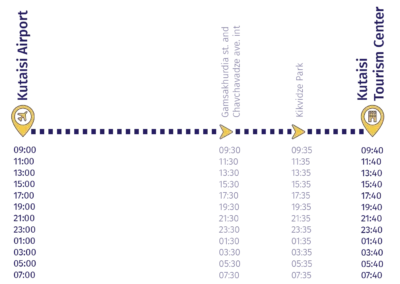
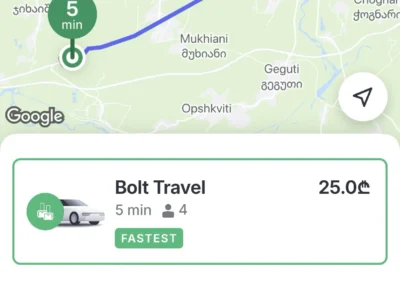

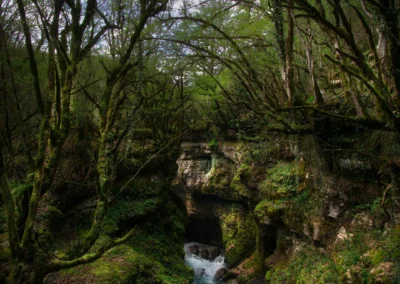
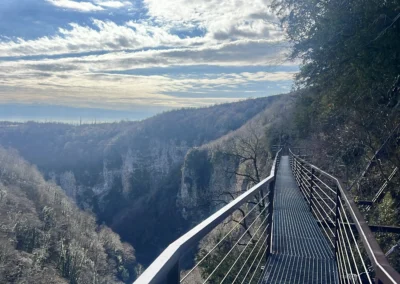
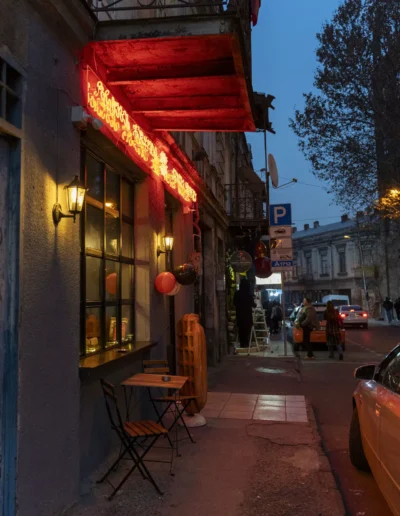
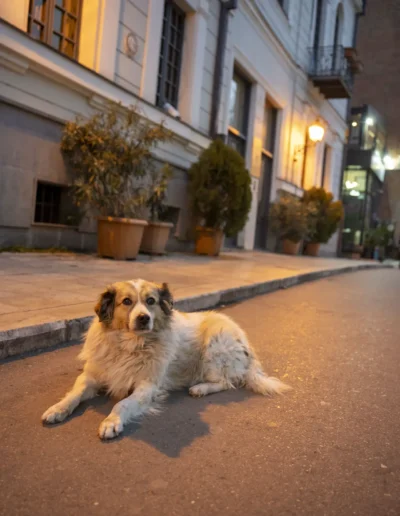
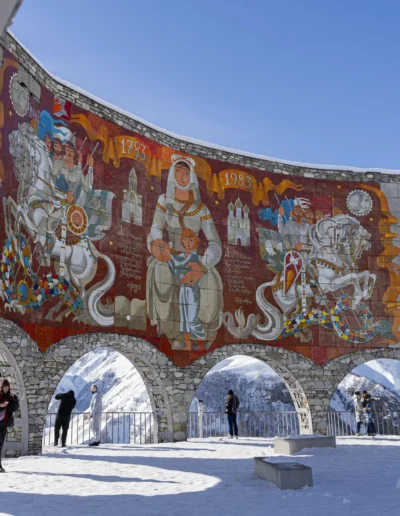
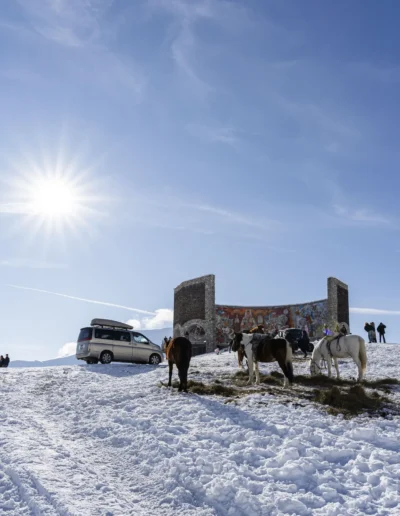
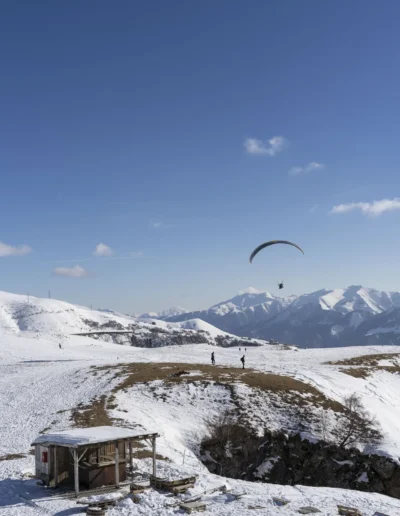
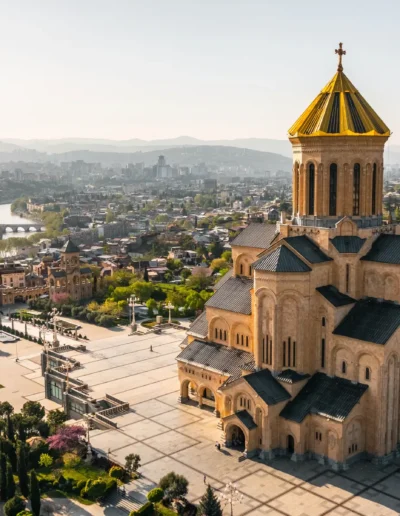
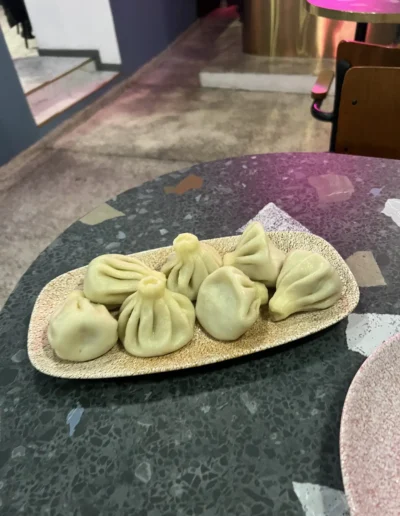
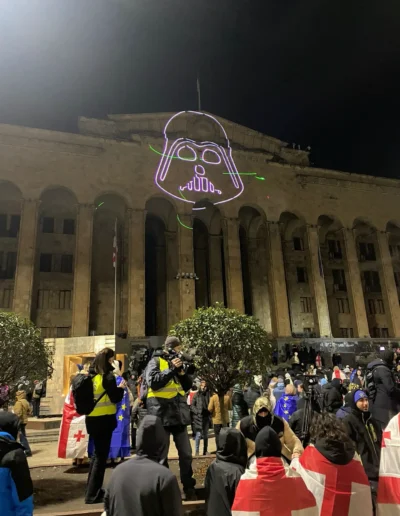

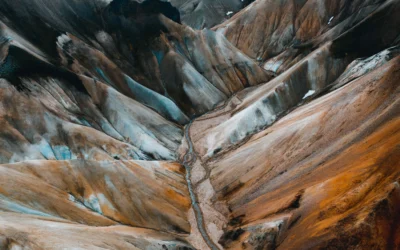
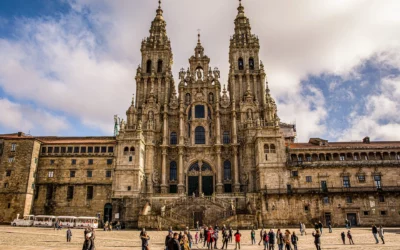
0 Comments